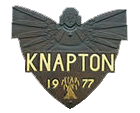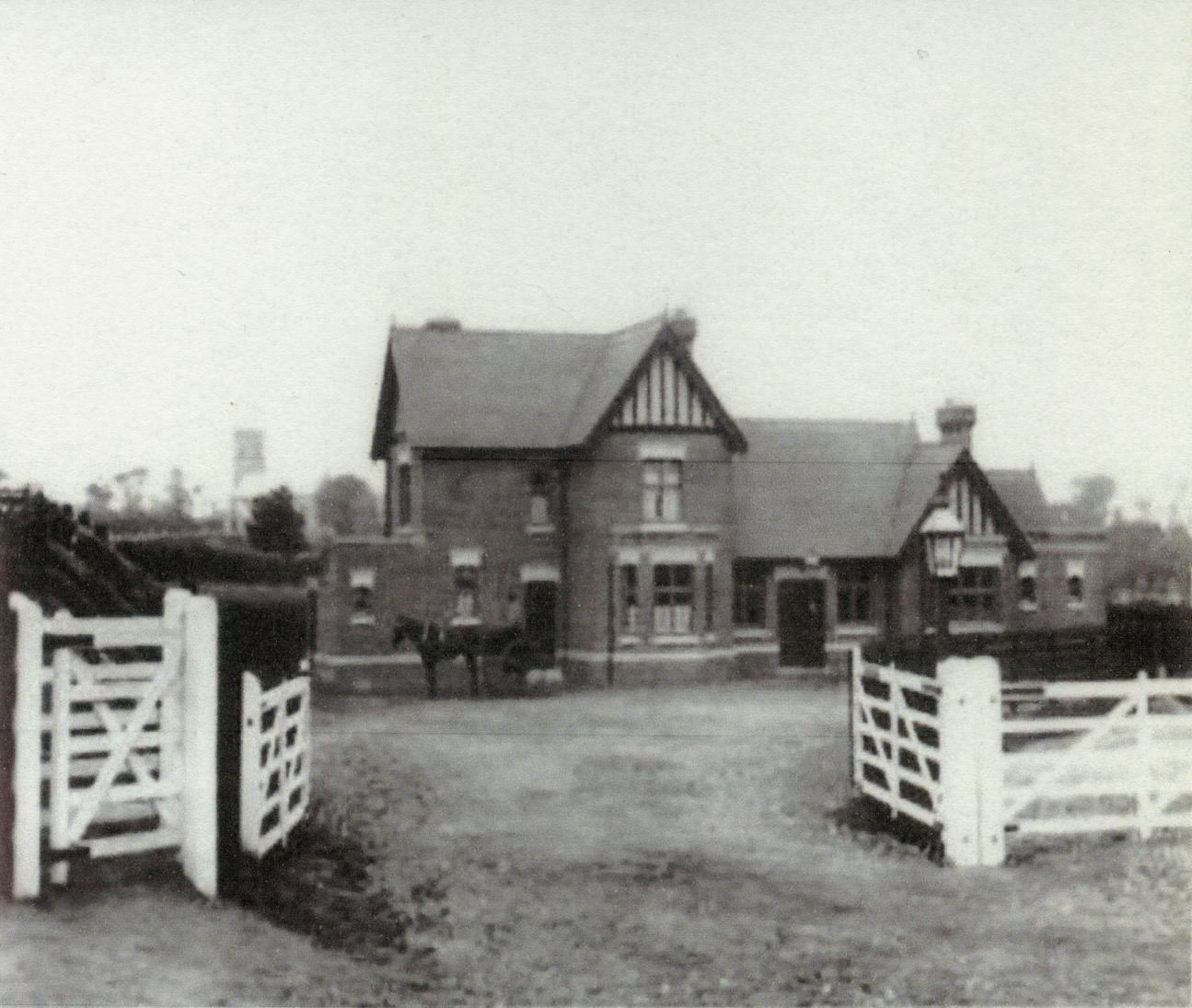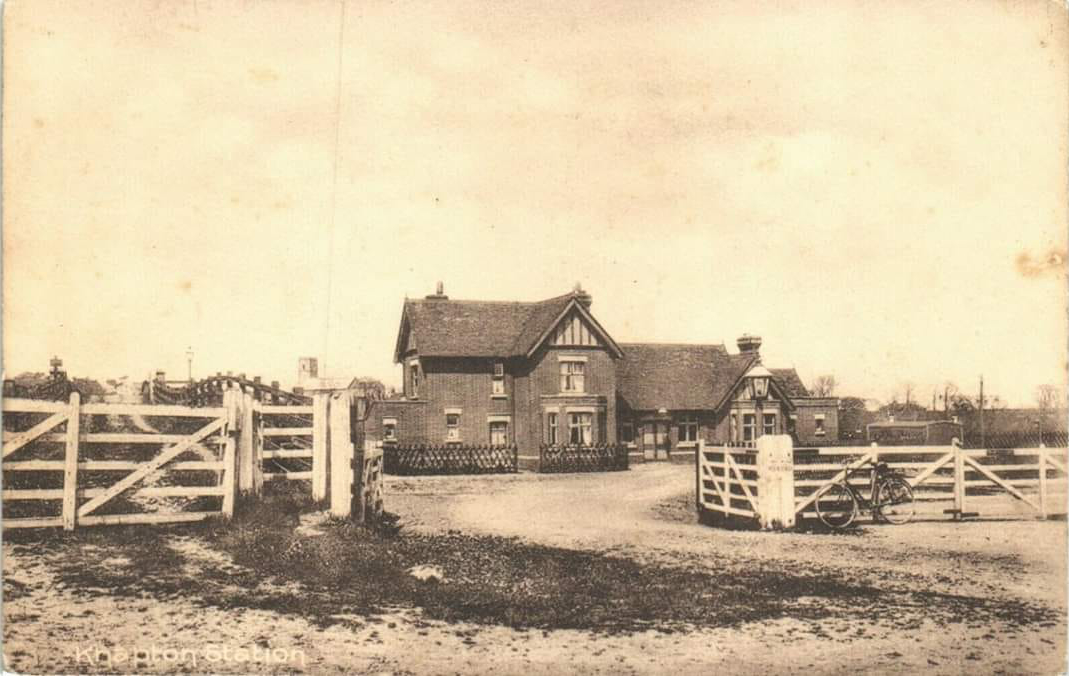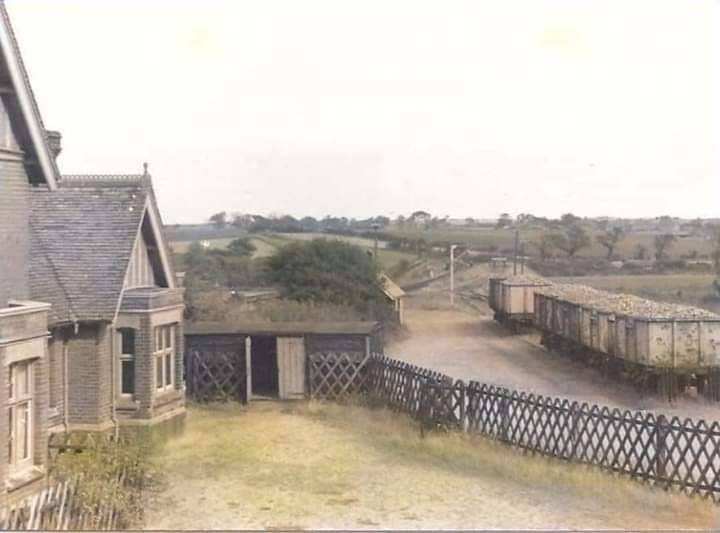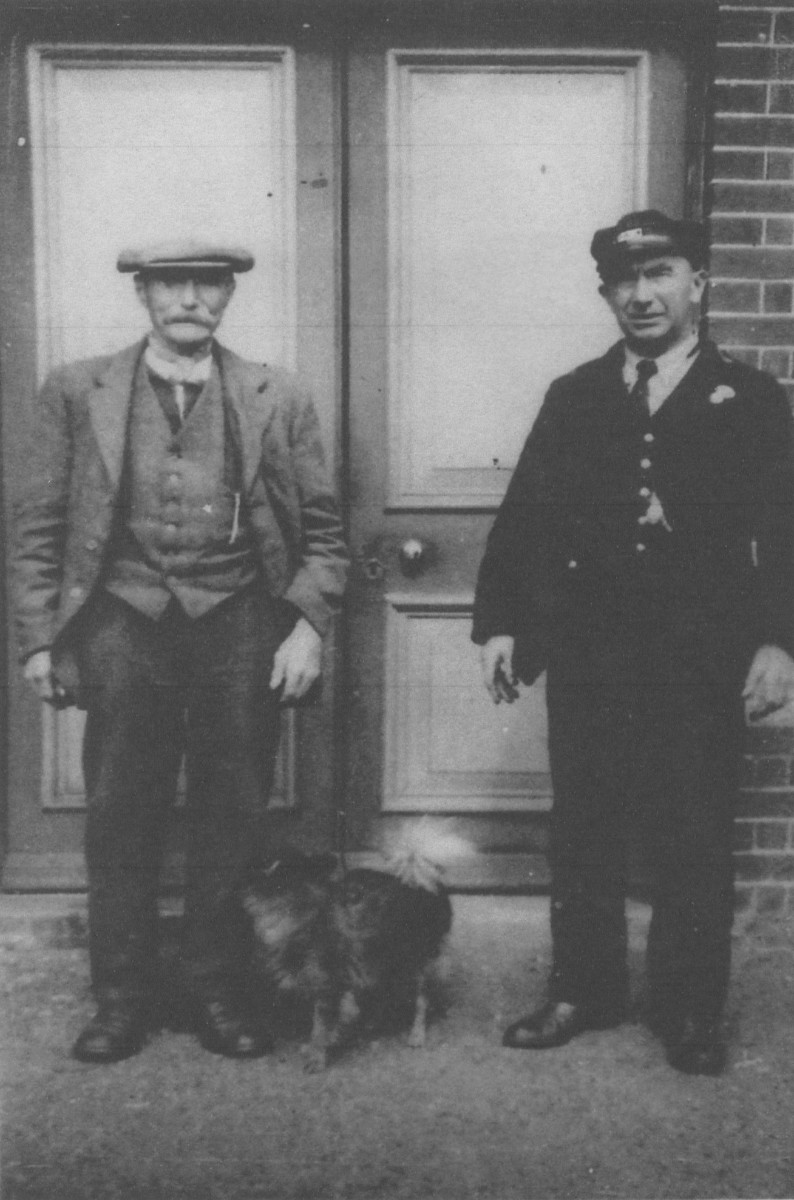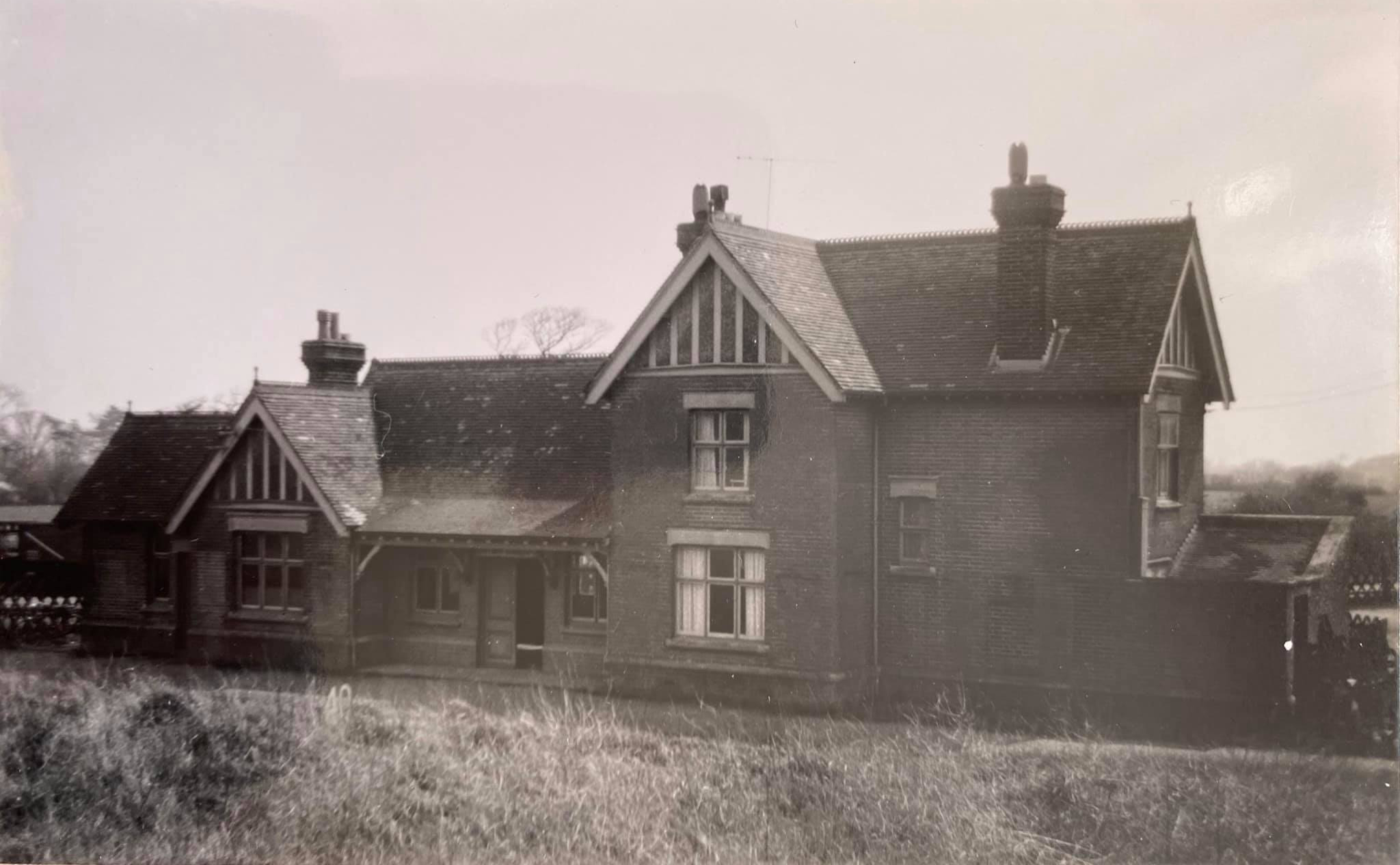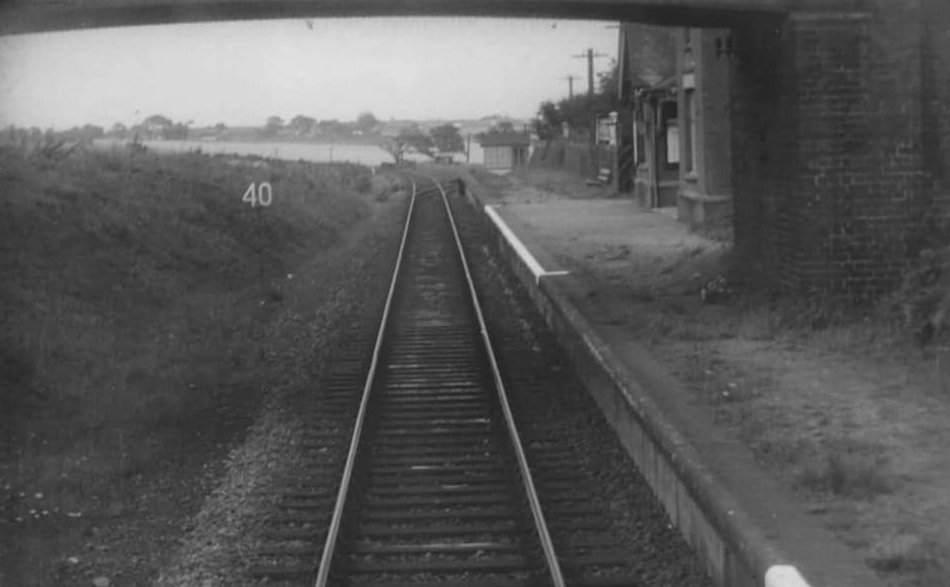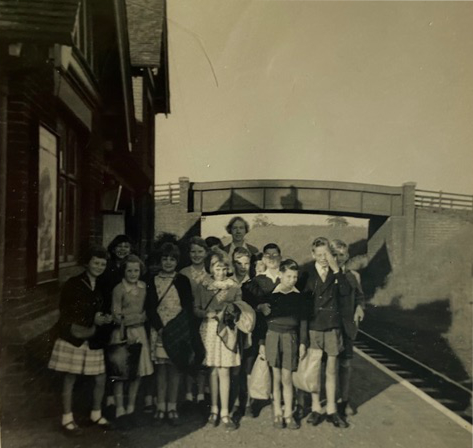The Station
The pristine brickwork of the station building in the picture on the right, and the fresh white paint on the gates show that the station has only just been built, while the horse and trap in the yard are a sign of more leisurely times.
The Paston and Knapton railway station was the first stop on the Norfolk and Suffolk Joint Railway line after leaving North Walsham for Cromer. It was built by Cornish & Gaymer of North Walsham in the “arts & crafts” style (similar to the station at Gayton Road) to serve the settlements of Paston and Knapton, though it was nearer to Paston.
The station was originally going to be called Knapton, but after representations from Paston it was decided to add Paston to the name, hence Paston & Knapton.
But there was only one bench on the platform which had already been ordered, and here it is… the seat back from the only bench on Knapton Station’s platform
Built with a single side platform and two sidings, passenger traffic was light but truckloads of mangolds, swedes and sugar beet made the station the principle beet-loading centre for the area. There was a tablet released Ground Frame in a small cabin which the train crew used to operate the points after the station became an unmanned halt.
The People
From the 1800s until recently, the Station Master was the key authority figure in the railway station, responsible for its smooth running and all of its staff.
Our station had a Station Master from when it first opened and in 1900, that was Arthur H Sayer.
By the following year, according to the 1901 Census, Alfred Harvey had taken over as Station Master. Alfred was born in Cambridge and started his career as a Railway Clerk at Hindolveston, Norfolk.
By the 1911 Census Alfred had moved to Corpusty in Norwich and was still a Station Master.
The 1911 Census also tells us that there were now several Knapton residents working for the Railway;
- Aged 25, John Edward Bunting of Grimston, Norfolk was the new Station Master living in the Station House with his young family
- James Yaxley, also aged 25 and born in Knapton, was the Porter
- The son of Knapton’s schoolmistress was the Railway Clerk. Frederick Cooper was 18yrs old and living with his widowed mother, Selina, in the School House in Hall Lane
- Thomas Coe, aged 55 and his son Elijah, aged 24, both from Saxthorpe, were platelayers
After the First World War economies became necessary and it was decided to administer the station from Mundesley and leave a senior porter in charge.
Elijah Coe eventually became the Senior Porter in around 1940.
But things didn’t really improve and following a reduction in rail traffic which was primarily caused by Cromer’s decline in popularity as a holiday destination after the Second World War, Paston & Knapton Station became an unstaffed halt In the 1950s.
The Beeching Cuts signalled the closure of the line. The station closed to passengers on 5th October 1964 and finally closed to goods traffic on 28th December 1964
Ghost Train
North Walsham to Mundesley
created and produced by
The Time Travel Artist
The lost Norfolk coastal route from North Walsham to Mundesley-on-Sea station!
Calling at Paston & Kanpton and Mundesley-on-Sea!
